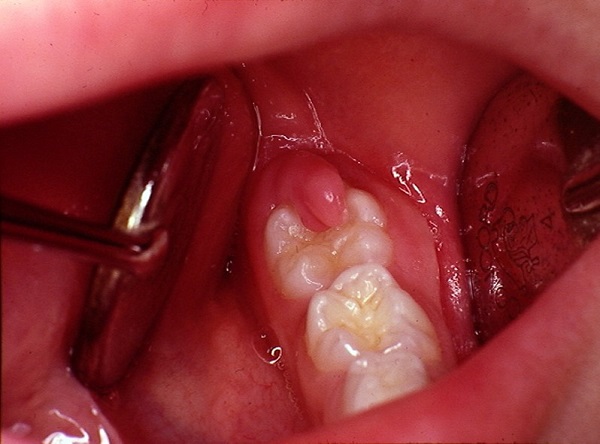can a tooth infection kill you

Can a Tooth Infection Kill You? Understanding the Risks and Treatments.
Tooth infections, also known as dental abscesses, are serious conditions that require prompt attention. While many people view dental issues as minor inconveniences, untreated tooth infections can lead to severe health complications, including death. This article delves into the risks associated with tooth infections, the symptoms to watch for, and the available treatments. Understanding these aspects can help prevent severe consequences and ensure prompt and effective care.
What is a Tooth Infection?
A tooth infection occurs when bacteria enter the dental pulp — the innermost part of the tooth containing nerves, blood vessels, and connective tissue. This can happen due to untreated cavities, gum disease, or trauma to the tooth. The infection leads to the formation of a dental abscess, a pocket of pus that forms around the affected tooth.
Types of Dental Abscesses
There are three primary types of dental abscesses:
Periapical Abscess
This type of abscess occurs at the tip of the tooth’s root and is typically caused by untreated dental cavities. Bacteria penetrate the hard outer layers of the tooth and infect the pulp, leading to inflammation and the formation of pus.
Periodontal Abscess
This abscess forms in the gums at the side of a tooth root, often resulting from gum disease or periodontitis. The infection starts in the supporting structures of the teeth, such as the periodontal ligaments and alveolar bone, and can spread to the surrounding tissues.
Gingival Abscess
A gingival abscess occurs in the gum tissue and does not affect the tooth or its supporting structures. It is usually caused by foreign objects, such as food particles, becoming embedded in the gum. This type of abscess can often be resolved with simple treatment, but it can still lead to complications if not addressed promptly.
Symptoms of a Tooth Infection
Recognizing the symptoms of a tooth infection is crucial for seeking timely treatment. Common symptoms include:
- Severe, persistent toothache that may radiate to the jaw, neck, or ear
- Sensitivity to hot and cold temperatures
- Swelling in the face, cheek, or neck
- Tender, swollen lymph nodes under the jaw or in the neck
- Fever
- Difficulty swallowing or breathing
- Bad breath or a foul taste in the mouth
- Redness and swelling in the gums
If you experience any of these symptoms, it is essential to see a dentist immediately. Prompt treatment can prevent the infection from spreading and causing further complications.
How Can a Tooth Infection Kill You?
While it may seem unlikely, a tooth infection can indeed be fatal if left untreated. The infection can spread beyond the tooth and into the surrounding tissues and bloodstream, leading to life-threatening conditions.
Sepsis
Sepsis is a severe and potentially fatal condition that occurs when the body’s response to an infection causes widespread inflammation. A tooth infection can lead to sepsis if bacteria enter the bloodstream and trigger a systemic inflammatory response. Symptoms of sepsis include high fever, rapid heart rate, rapid breathing, confusion, and severe weakness. Immediate medical attention is required to treat sepsis.
The Pathophysiology of Sepsis
When bacteria from a tooth infection enter the bloodstream, the immune system responds by releasing chemicals to fight the infection. In sepsis, this response becomes dysregulated, leading to widespread inflammation that can damage organs and tissues. This can result in septic shock, characterized by a dramatic drop in blood pressure, multiple organ failure, and, if untreated, death.
Risk Factors for Sepsis
Certain factors increase the risk of sepsis from a tooth infection, including:
- Advanced age
- Chronic illnesses such as diabetes, kidney disease, or liver disease
- Immunosuppressive conditions or treatments
- Poor oral hygiene and dental care
- Delays in seeking treatment for tooth infections
Ludwig’s Angina
Ludwig’s angina is a rare but serious bacterial infection that affects the floor of the mouth, under the tongue. It can develop from a tooth infection that spreads to the tissues beneath the lower jaw. Symptoms include severe pain and swelling in the neck and floor of the mouth, difficulty swallowing and breathing, and fever. Ludwig’s angina can block the airway, making it a medical emergency that requires immediate intervention.
Complications of Ludwig’s Angina
Ludwig’s angina can lead to several severe complications if not treated promptly, including:
- Airway obstruction
- Spread of infection to the mediastinum (the central compartment of the thoracic cavity)
- Septicemia (blood poisoning)
- Necrotizing fasciitis (flesh-eating disease)
Treatment of Ludwig’s Angina
Treatment involves securing the airway, administering intravenous antibiotics, and surgical drainage of the infected tissues. Early recognition and intervention are critical to prevent life-threatening complications.
Brain Abscess
In rare cases, a tooth infection can spread to the brain, leading to a brain abscess. This occurs when bacteria from the infected tooth travel through the bloodstream to the brain, causing a localized collection of pus. Symptoms of a brain abscess include severe headache, fever, nausea, vomiting, neurological deficits, and altered mental status. A brain abscess is a life-threatening condition that requires urgent medical treatment, often including surgery and antibiotics.
Formation of a Brain Abscess
A brain abscess typically forms when bacteria or fungi infect brain tissue, causing inflammation and pus accumulation. This can occur due to the hematogenous spread of pathogens from a distant infection, such as a tooth abscess. The growing abscess increases intracranial pressure and can compress brain structures, leading to severe neurological symptoms and complications.
Diagnosis and Treatment
Diagnosis involves imaging studies, such as CT or MRI scans, to identify the abscess and assess its size and location. Treatment includes surgical drainage or aspiration of the abscess, combined with prolonged antibiotic therapy to eliminate the infection.
Mediastinitis
Mediastinitis is an infection of the mediastinum, the central compartment of the thoracic cavity. It can occur if a tooth infection spreads to the chest area through the fascial planes of the neck. Symptoms include severe chest pain, fever, chills, and difficulty breathing. Mediastinitis is a medical emergency that requires immediate treatment with intravenous antibiotics and possibly surgery.
Causes and Spread
Mediastinitis can result from the direct extension of infection from dental or oropharyngeal abscesses, as well as from invasive procedures or trauma. The infection spreads rapidly through connective tissue spaces, leading to widespread inflammation and potentially life-threatening complications.
Management and Outcomes
Management involves aggressive antibiotic therapy, surgical debridement of infected tissues, and supportive care in an intensive care setting. Early recognition and treatment are essential to improve outcomes and reduce mortality.

Risk Factors for Complications
Certain factors can increase the risk of a tooth infection leading to severe complications. These include:
Weakened Immune System
Individuals with weakened immune systems, such as those with HIV/AIDS, diabetes, or undergoing chemotherapy, are more susceptible to infections and their complications. The body’s ability to fight off bacterial infections is compromised, increasing the risk of systemic spread.
Chronic Health Conditions
Chronic health conditions, such as heart disease and respiratory conditions, can increase the risk of complications from a tooth infection. Conditions that affect the body’s ability to heal and respond to infections can exacerbate the severity of dental infections.
Poor Oral Hygiene
Neglecting oral hygiene can lead to dental issues that increase the risk of infections. Regular brushing, flossing, and dental check-ups are essential for preventing tooth decay and gum disease, which are common precursors to tooth infections.
Delay in Seeking Treatment
Delaying treatment for a tooth infection allows the bacteria to multiply and spread, increasing the risk of severe complications. Early intervention is crucial to prevent the infection from advancing and causing systemic issues.
Diagnosis of a Tooth Infection
To diagnose a tooth infection, a dentist will conduct a thorough examination, which may include:
Visual Examination
The dentist will inspect the affected tooth and surrounding tissues for signs of infection, such as swelling, redness, and pus discharge. Visual cues can provide initial insights into the severity and extent of the infection.
Percussion Test
Tapping on the affected tooth can help determine the severity of the infection. A positive percussion test, where the tooth is tender or painful when tapped, indicates inflammation and infection in the dental pulp or surrounding tissues.
X-rays
Dental X-rays can reveal the extent of the infection and any damage to the surrounding bone and tissues. X-rays are essential for identifying periapical abscesses and assessing bone involvement.
CT Scan
In severe cases, a CT scan may be necessary to assess the spread of the infection to other areas, such as the neck or chest. Advanced imaging provides detailed information on the infection’s extent and guides treatment planning.
Treatment for a Tooth Infection
Treating a tooth infection promptly can prevent complications and ensure a full recovery. Common treatments include:
Antibiotics
Antibiotics are often prescribed to eliminate the infection and prevent it from spreading. It is crucial to complete the full course of antibiotics as prescribed by the dentist, even if symptoms improve before the medication is finished. Common antibiotics for dental infections include amoxicillin, clindamycin, and metronidazole.
Drainage
If an abscess has formed, the dentist may need to drain the pus to relieve pain and reduce swelling. This procedure involves making a small incision in the abscess to allow the pus to escape. Drainage can be performed in the dental office under local anesthesia.
Root Canal Treatment
A root canal treatment may be necessary to remove the infected pulp from the tooth. During this procedure, the dentist cleans and disinfects the tooth’s interior, fills it with a biocompatible material, and seals it to prevent further infection. Root canal treatment preserves the tooth and eliminates the source of infection.
Tooth Extraction
In cases where the tooth is severely damaged and cannot be saved, extraction may be necessary. Removing the infected tooth can prevent the infection from spreading to other areas. Following extraction, options for tooth replacement, such as dental implants or bridges, can be discussed.
Pain Management
Pain management strategies, such as over-the-counter pain relievers, can help alleviate discomfort while the infection is being treated. Nonsteroidal anti-inflammatory drugs (NSAIDs) like ibuprofen or acetaminophen are commonly recommended for pain relief.
Prevention of Tooth Infections
Preventing tooth infections is crucial for maintaining good oral health and avoiding serious complications. Here are some tips for preventing tooth infections:
Maintain Good Oral Hygiene
Brush your teeth at least twice a day with fluoride toothpaste, floss daily, and use an antimicrobial mouthwash to reduce plaque and bacteria. Regular oral hygiene practices are essential for preventing cavities and gum disease.
Regular Dental Check-ups
Visit your dentist regularly for check-ups and cleanings. Early detection and treatment of dental issues can prevent infections. Routine dental visits allow for the identification of potential problems before they escalate into infections.
Address Dental Issues Promptly
If you experience any dental problems, such as tooth pain, cavities, or gum disease, seek prompt treatment to prevent infections. Ignoring dental issues can lead to complications and increase the risk of infections.
Healthy Diet
A balanced diet rich in vitamins and minerals supports oral health. Limit sugary foods and drinks, which can contribute to tooth decay. Foods high in calcium, phosphorus, and vitamin D promote strong teeth and gums.
Avoid Tobacco Products
Smoking and using other tobacco products can increase the risk of dental problems and infections. Quitting tobacco can improve your overall oral health. Tobacco use is a significant risk factor for gum disease and oral infections.
Protective Gear
If you participate in contact sports or activities that pose a risk of dental trauma, wear a mouthguard to protect your teeth. Preventing dental injuries reduces the risk of infections caused by trauma.
Conclusion
While it may seem unlikely, a tooth infection can indeed be fatal if left untreated. The infection can spread beyond the tooth, leading to severe and potentially life-threatening complications such as sepsis, Ludwig’s angina, brain abscess, and mediastinitis. Recognizing the symptoms of a tooth infection and seeking prompt treatment is crucial for preventing these complications.
Maintaining good oral hygiene, attending regular dental check-ups, addressing dental issues promptly, and adopting a healthy lifestyle are essential steps in preventing tooth infections. If you experience symptoms of a tooth infection, do not delay in seeking dental care. Early intervention can save your life and preserve your oral health.
Understanding the potential severity of a tooth infection underscores the importance of oral health care and timely medical intervention. By being proactive in your dental care, you can prevent infections and protect your overall health. Remember, a tooth infection is not just a dental issue; it can have far-reaching effects on your entire body, making it vital to address any signs of infection without delay.
Related to read:
Best Oral Hygiene Practices For Optimum Oral Health.
Bruxism: Teeth grinding causes treatment and prevention.
How to keep your gums healthy and disease-free?
References
To ensure the information provided is accurate and up-to-date, the following sources were referenced:
- American Dental Association. (n.d.). Plaque and Tartar. Retrieved from ADA website
- Mayo Clinic. (n.d.). Dental Plaque. Retrieved from Mayo Clinic website
- National Institute of Dental and Craniofacial Research. (n.d.). Periodontal (Gum) Disease. Retrieved from NIDCR website
4o









